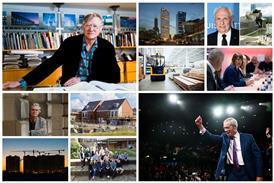Practices have a responsibility to equip graduates with the skills they will need to succeed in a specific workplace, writes Jo Wright

Architecture as a profession is surprisingly adaptable. When computerisation arrived on the scene more than 30 years ago, it didn’t have to force its way across the drawbridge of a highly defensive industry. Digital tools of the trade, like other revolutionary changes to how we work, were welcomed as a means to an end – and not as an end in themselves.
The digitisation of architecture and design in recent years has permeated every aspect of its practice. To design for building resilience, net zero carbon – both operational and embodied – assembly, disassembly, longevity and changing purposes, we have had to embrace it.
In response to these urgent new priorities and technology’s importance in identifying solutions, the question turns to how design studios will provide the necessary training to the next cohort of graduates and apprentices. While there used to be a common toolkit of a drawing board, drafting tape, a compass and a gummed up set of rotrings, digital architecture and design enjoys no universal standard.
The younger generation of digital natives will progress through the education system and into the workplace over the next decade. They’ll have been exposed to a multitude of different tools, though not necessarily the individual blend that makes each architecture practice unique.
In some schools of architecture there is still a disconnect between curricula that were developed in the analogue era and the skills required by the practices that graduates later enter, which have shifted to entirely digital ways of working.
At our studio, the digital transition has magnified our focus on the recruitment process
Whether or not new recruits are accustomed to the technical tools, processes and systems that factor into our work, it is our responsibility as employers to ensure that the next generation understands and is taught the individual “languages” of our practices – the vocab and grammar of software and workflows which underpin the delivery of great, sustainable outcomes.

At our studio, the digital transition has magnified our focus on the recruitment process. New recruits to the London practice of Perkins&Will arrive from a range of disciplines, including architecture, interior or product design, and sustainability specialisms.
We appreciate that the transition from education to workplace can feel opaque, especially for graduates or apprentices entering a practice for the first time. We recognise the need to invest time in building their fluency in our unique “language” – supporting them in recognising the common threads between our projects and the way in which we practice.
We are planning an induction process for this year’s cohort which builds a set of common, foundational skills. The hope is that this will foster an integrated community where people can share knowledge and move across discipline boundaries with ease, united by that common language, rather than being herded into organisational silos.
Perkins&Will is privileged to sit within a wider multi-national family of companies in the built environment, which include sustainability and digital consultants like Introba and structural engineers like Dar, affording greater exposure across the disciplines of construction, surveying, and engineering.
The demands of sustainability, flexibility and durability have put the onus on practices to ensure that staff are equipped to enter the industry with the right set of skills. As professionals it is our responsibility help equip the next generation with the tools they will need to succeed, while maintaining that fine balance between fostering creativity and introducing commercial purpose to these future practitioners.
Postscript
Jo Wright is UK managing director at Perkins&Will
















No comments yet